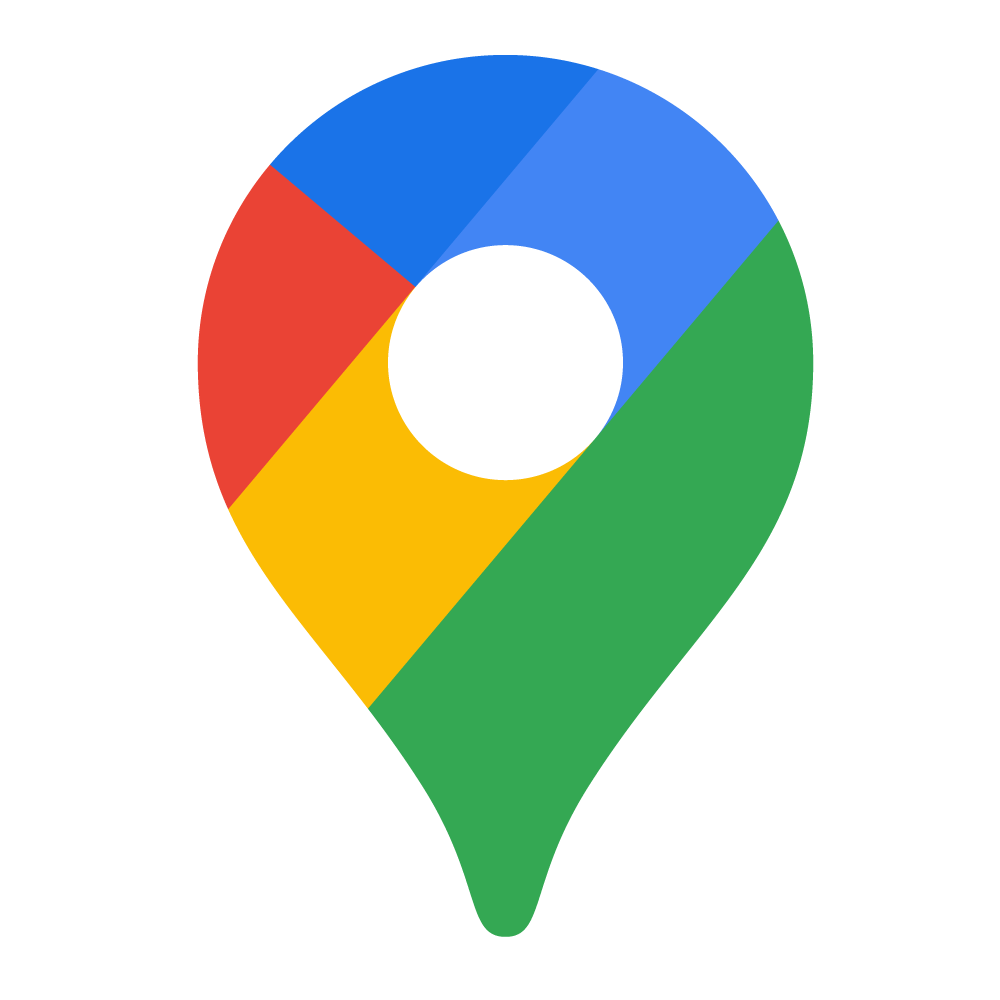| Previous
Page |
PCLinuxOS
Magazine |
PCLinuxOS |
Article List |
Disclaimer |
Next Page |
Short Topix: Linux Servers, Workstations Hackers' Next Target |
|
by Paul Arnote (parnote) What Did The Earth Look Like Years Ago Where YOU Live? 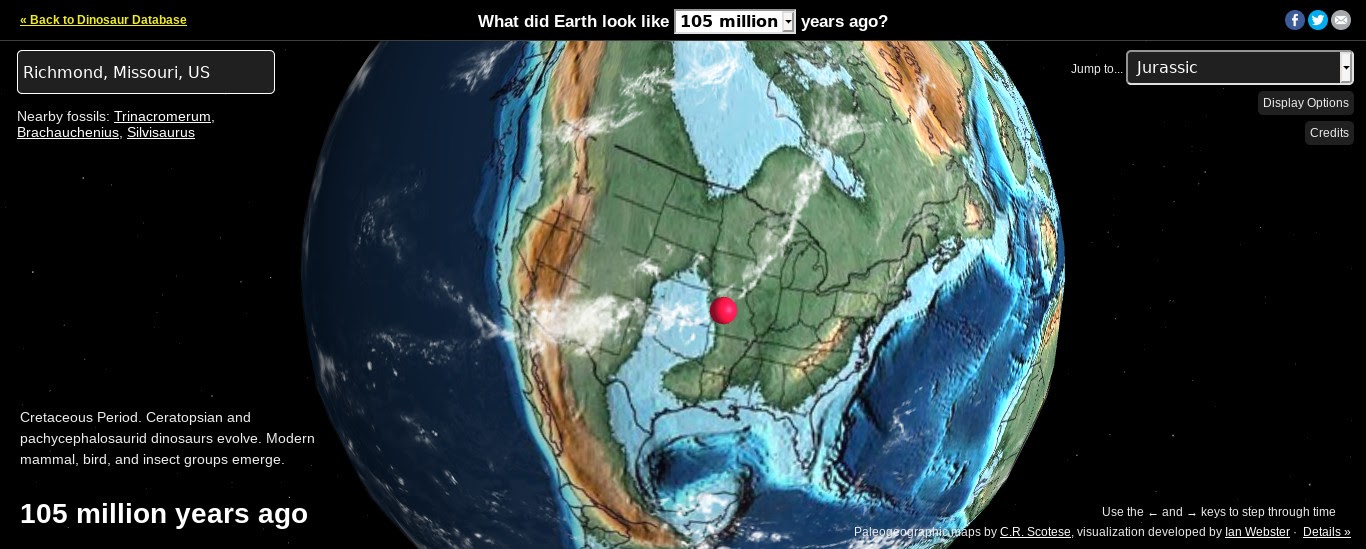 Did you ever wonder what the area around where you live looked like millions of years ago? Thanks to continental drift's ever changing sculpting of our planet, things might not have looked anything like they do today. In the example above, I placed Richmond, Missouri into the location search bar (no, I don't live there ... I just work there). 105 million years ago, Richmond was near the shores of a great inland sea. Today, it's totally landlocked, with no expansive bodies of water within hundreds of miles. Using the geographical models created by Christopher Stoese, California palaeontologist Ian Webster created a web application that is an interactive, online map of just what the Earth looked like as much as 750 million years ago. Users can use their mouse pointer to click on the Earth, and then rotate and tilt the Earth in any direction, allowing them to see what all of the continents looked like at the selected time in Earth's history. Select the period in history you want to "visit" from the dropdown list at the top center of the browser window. Or, users can select from the dropdown list at the upper right corner of the browser window to jump to predefined times in history, like the first appearance of green algae. For example and as a point of reference, the supercontinent Pangea formed around 310 million years ago. It subsequently broke up again approximately 180 million years ago. At the lower left part of the browser window, a brief explanation is offered for what is happening at that period of Earth history. Google Meet Limits Free Accounts To 60 Minutes
Back in April, as the pandemic was ramping up, Google said that they would make Google Meet free until September 30. Just as promised, Google will now restrict free Google Meet users to meetings of no longer than 60 minutes (despite the pandemic still raging onward). As the pandemic ramped up, Zoom zoomed as it took off, allowing quarantined and sequestered users to carry on in-person, face-to-face meetings. Google and Microsoft scrambled to catch up and try to take a portion of the video conferencing market away from Zoom. Microsoft countered with Microsoft Teams, while Google countered with Google Meet. Google Meet previously went by Hangouts Meet, and became Google Meet slightly before the April announcement of free meetings for up to 100 users at a time. Shortly after the April announcement, Google Meet hosted up to 100 million users a day. Warning: Linux Servers, Workstations Hackers' Next Targets  According to a TechRepublic article, Linux servers and workstations may be the next target of hackers. With increased adoption of open source solutions by governments and large corporations, threat actors have diversified their tools to include Linux based tools. They are using these tools to exploit vulnerabilities in the Linux code. It's true that Windows machines are a preferred target for mass malware attacks, but advanced persistent threats (APTs) are more of a threat to Linux, since the threat actor is usually either a nation state or state-sponsored group who establishes a long term presence on a network to wreak havoc. According to Kaspersky, there are over a dozen APT actors who have been seen using Linux malware or some Linux based modules. The article offered up some tips and techniques Linux users can employ to protect themselves.
Google Maps To Get COVID-19 Tracking Trends
Coming soon to Google Maps on your mobile device will be the ability to track trends for COVID-19. The update for Google Maps is rolling out as we speak, so if you don't have it already, you should be getting it soon.  WHEN YOU GET the updated Google Maps on your mobile device (there are currently no reports of the feature coming to the desktop version of Google Maps), click on the "Options" setting (looks like stacked boxes towards the upper right of the screen, illustrated by the arrow on the leftmost image). An icon "menu" will open, with the new COVID-19 feature now among the icons (illustrated by the red arrow in the rightmost image above). The new feature gives seven-day averages for COVID-19 cases, and works on Google Maps in all 220 countries where Google Maps supports. The trends are color coded to make it easy for Maps users to decipher. Still, nothing beats social distancing, wearing masks, and foregoing travel plans to help minimize the spread of COVID-19. But, if you must travel, you can at least have some idea of how the area you're about to visit is faring with COVID-19 cases. Old TV Set Interferes With Village DSL 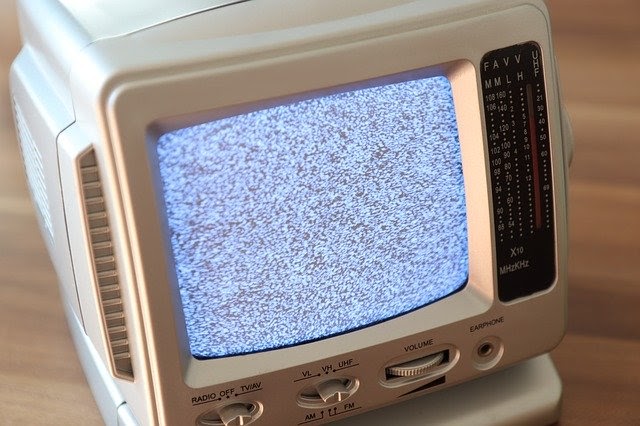 A village in Aberhosan, Wales, population 400, experienced puzzling daily internet outages to its DSL network each morning for 18 months. That is, until engineers used a spectrum analyzer to track down the cause of the interruptions in service. Here's what they found, and this was after replacing the DSL cables in the village, according to an article on ArsTechnica: Having exhausted all other avenues, we wanted to do one final test to see if the fault was being caused by a phenomenon known as SHINE (Single High-level Impulse Noise) where electrical interference is emitted from an appliance that can then have an impact on broadband connectivity. By using a device called a Spectrum Analyzer we walked up and down the village in the torrential rain at 6am to see if we could find an "electrical noise" to support our theory. And at 7am, like clockwork, it happened! Our device picked up a large burst of electrical interference in the village. The source of the "electrical noise" was traced to a property in the village. It turned out that at 7am every morning, the occupant would switch on their old TV which would in turn knock out broadband for the entire village. As you can imagine, when we pointed this out to the resident, they were mortified that their old second-hand TV was the cause of an entire village's broadband problems, and they immediately agreed to switch it off and not use [it] again. There was no report on how long each day the outages occurred. But, DSL lines are highly susceptible to electromagnetic interference from electronic devices like cathode-ray tubes (CRTs). Fiber optic lines, however, are not, since they use light bursts to transmit data, instead of the fluctuating electrical signals that DSL networks use. The unnamed resident has agreed to not use that old TV again, allowing the town's DSL network to get back to business as usual. Could It Be? WinXP Source Code Leaked, Spread On ‘Net 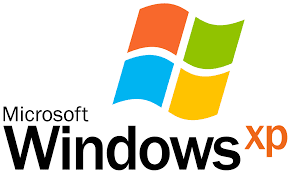 Yes, "official support" for Windows XP ended six looonnnnnng years ago in 2014. Despite the withdrawal of support, some of the latest web traffic reports still find that Windows XP is responsible for 1.26 percent of all internet traffic. Like a zombie, it's the version of Windows that just won't die. Well, the source code for Windows XP SP1 was leaked on 4Chan recently, and quickly spread across the internet like a wildfire. The code dump also included the code for Windows NT 3.5 and the original XBox source code, both of which were previously released in May, 2020, according to an article on Windows Central. Other various computing news sources also include Windows Server 2003 source code in the reports of what exactly was leaked. While you're at it, take a look at this Reddit thread. It's quite an eye-opener. While some 4Chan members debated the authenticity of the released code, initial examination by security researchers seem to confirm that this may be, in fact, the real deal. In the days following the announcement, check out the search suggestions in Google (below). 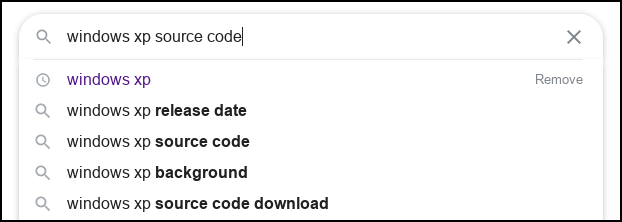 While you might be tempted to say, "So what?," this is a big deal. First of all, exposure of the source code for a no-longer-supported operating system could open those hanging onto the "ancient" operating system to all sorts of new security vulnerabilities, even beyond the vulnerabilities you might expect on a no-longer-supported, no-longer-patched piece of software. While this might be the first time that the Windows XP source code has gone "public," Microsoft has had a program since 2001 that provided source code to its products to governments and researchers. Presumably, this was provided "as a way to independently provide a check on the security of its software." Yeah. Riiiiight! More than anything, it would have allowed governments and government agencies a way to find and exploit vulnerabilities in the software to entrap and ensnare users who weren't "toeing the line." |


